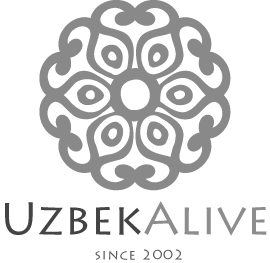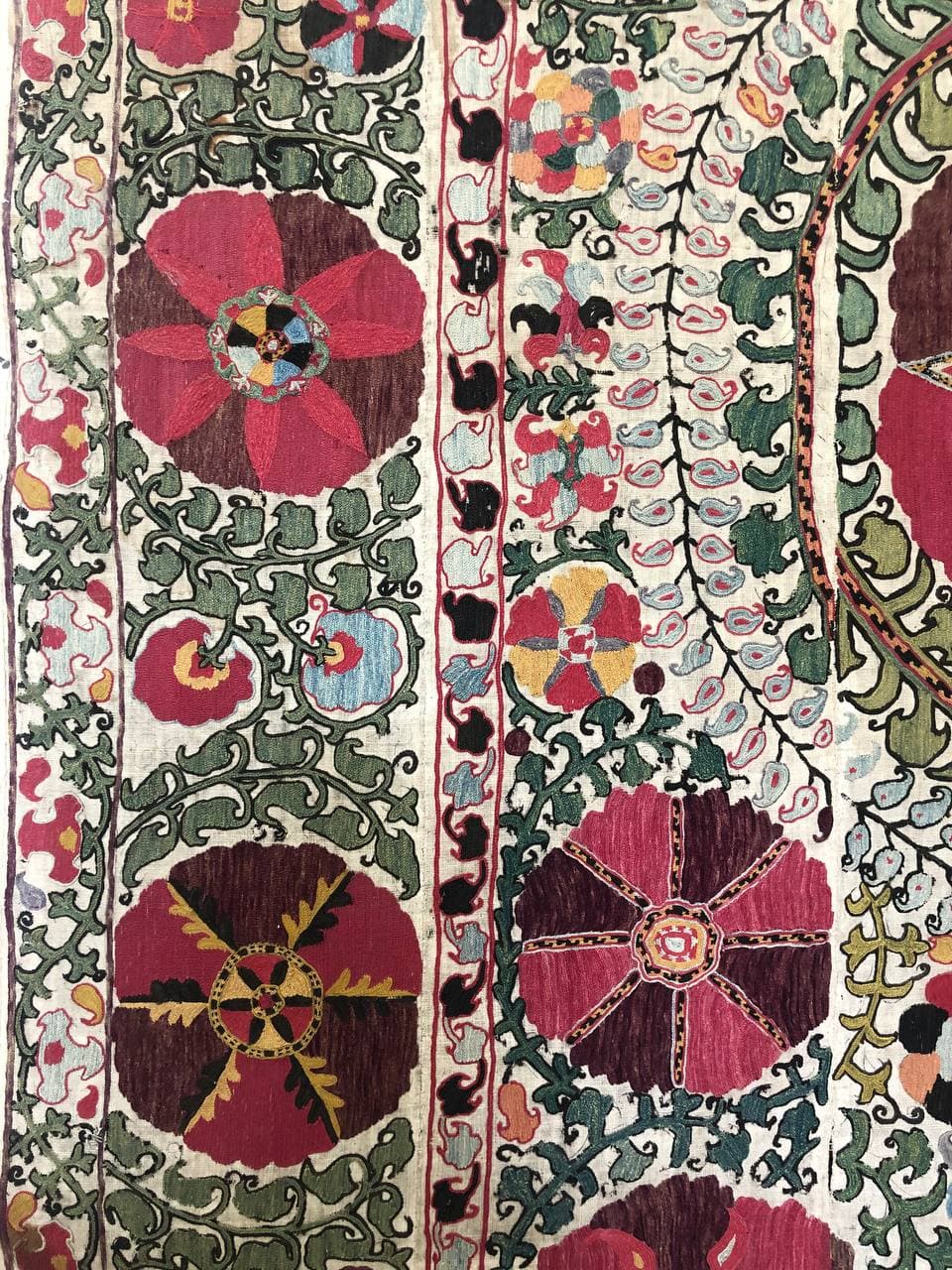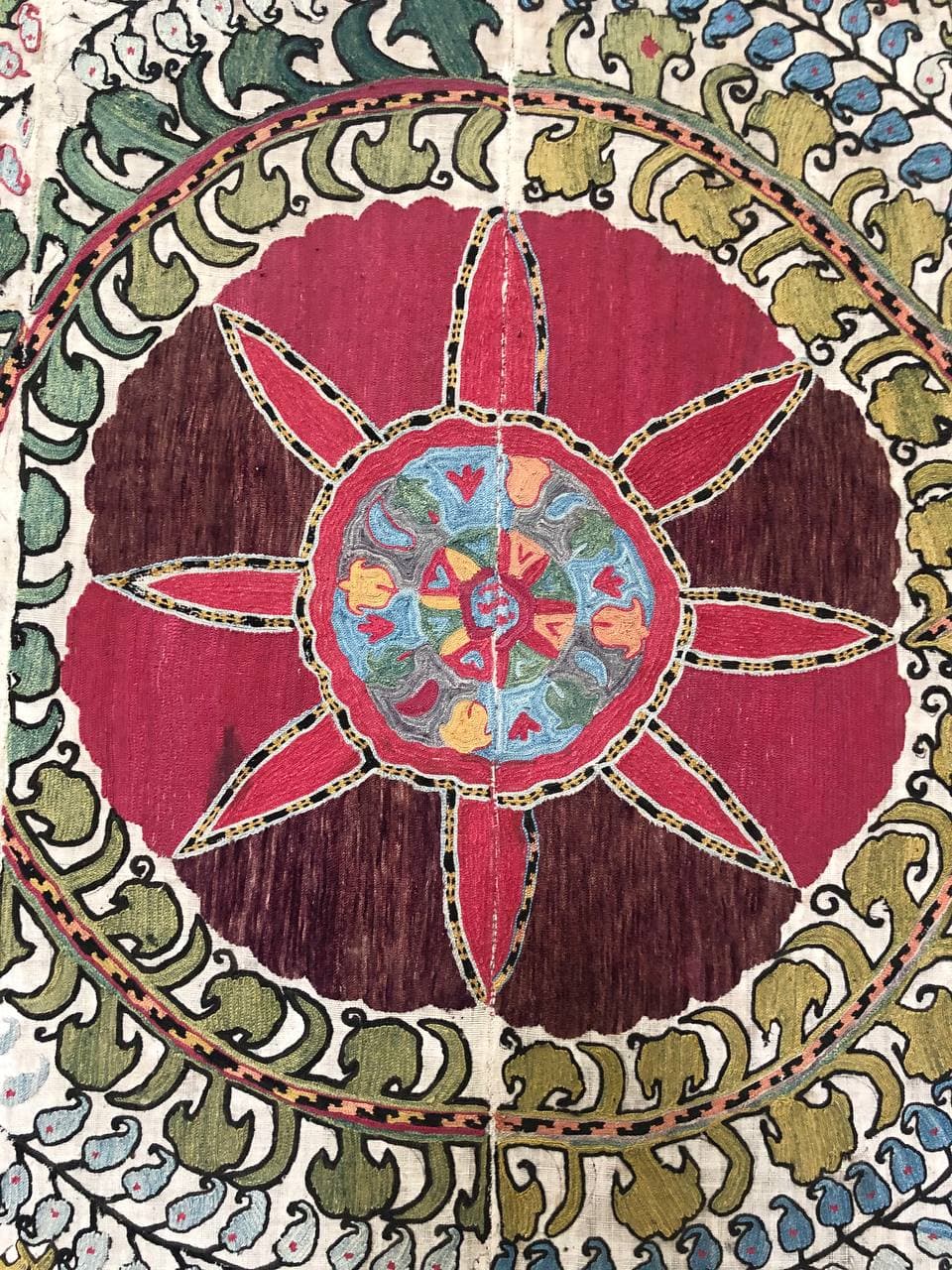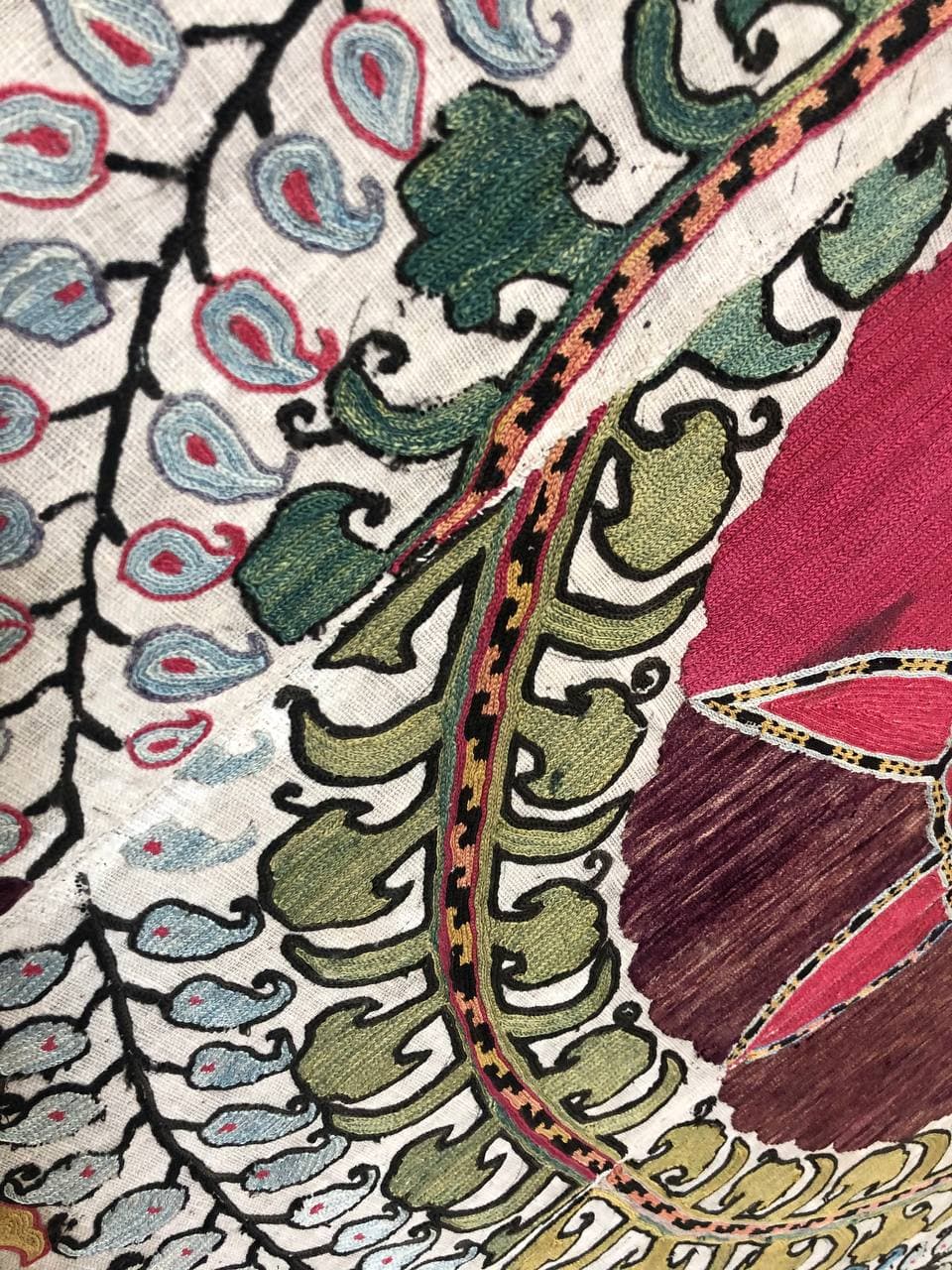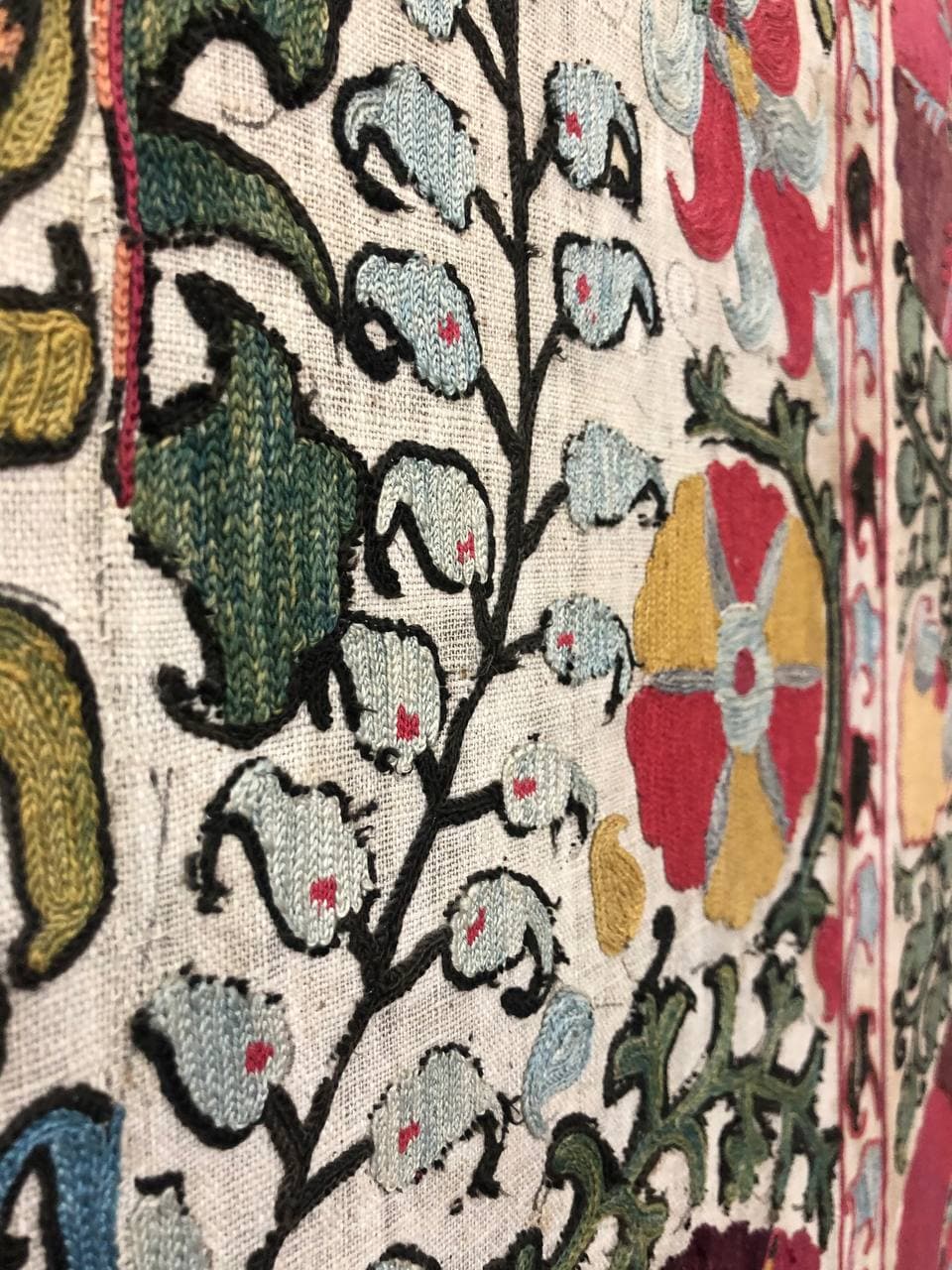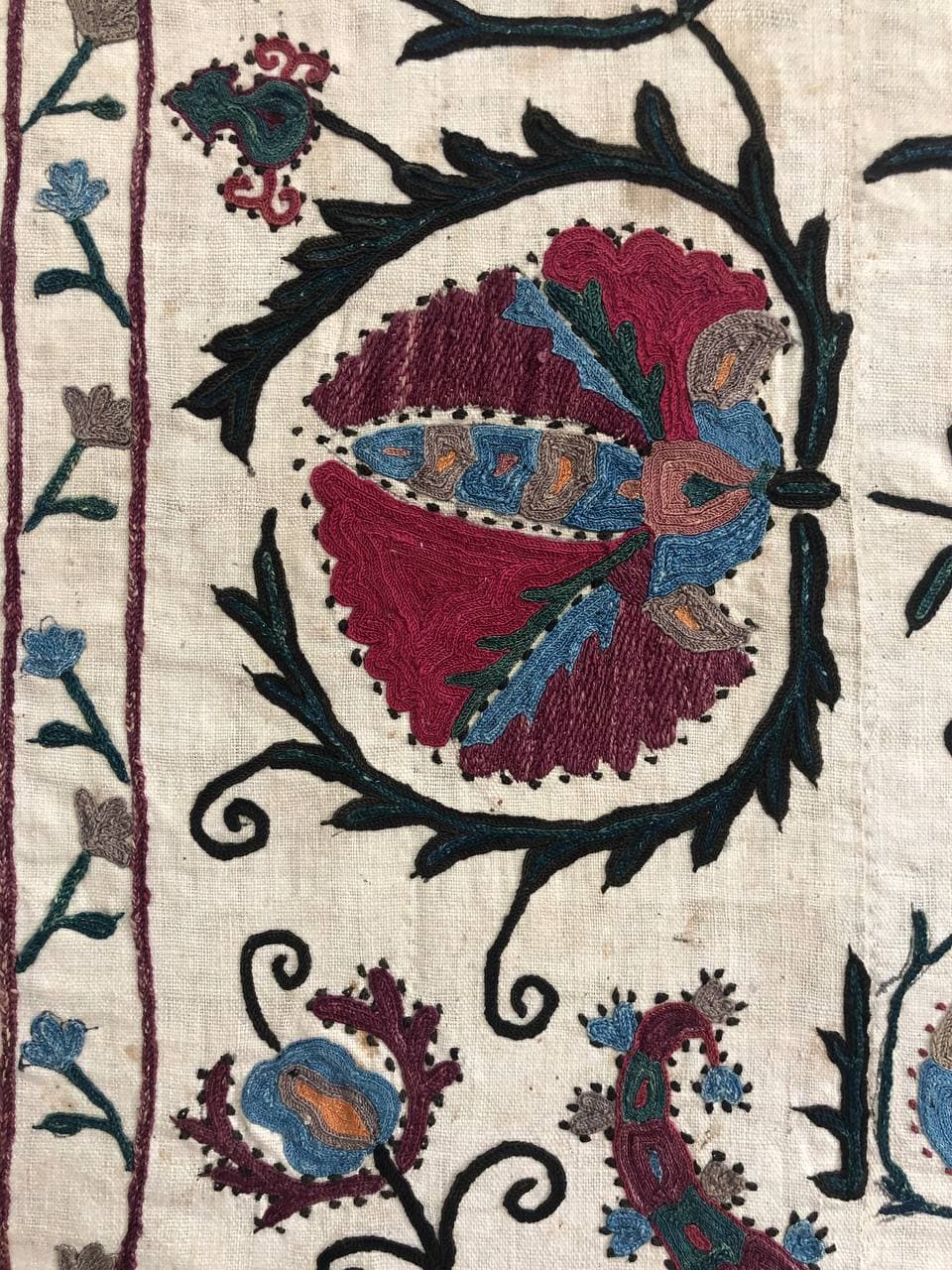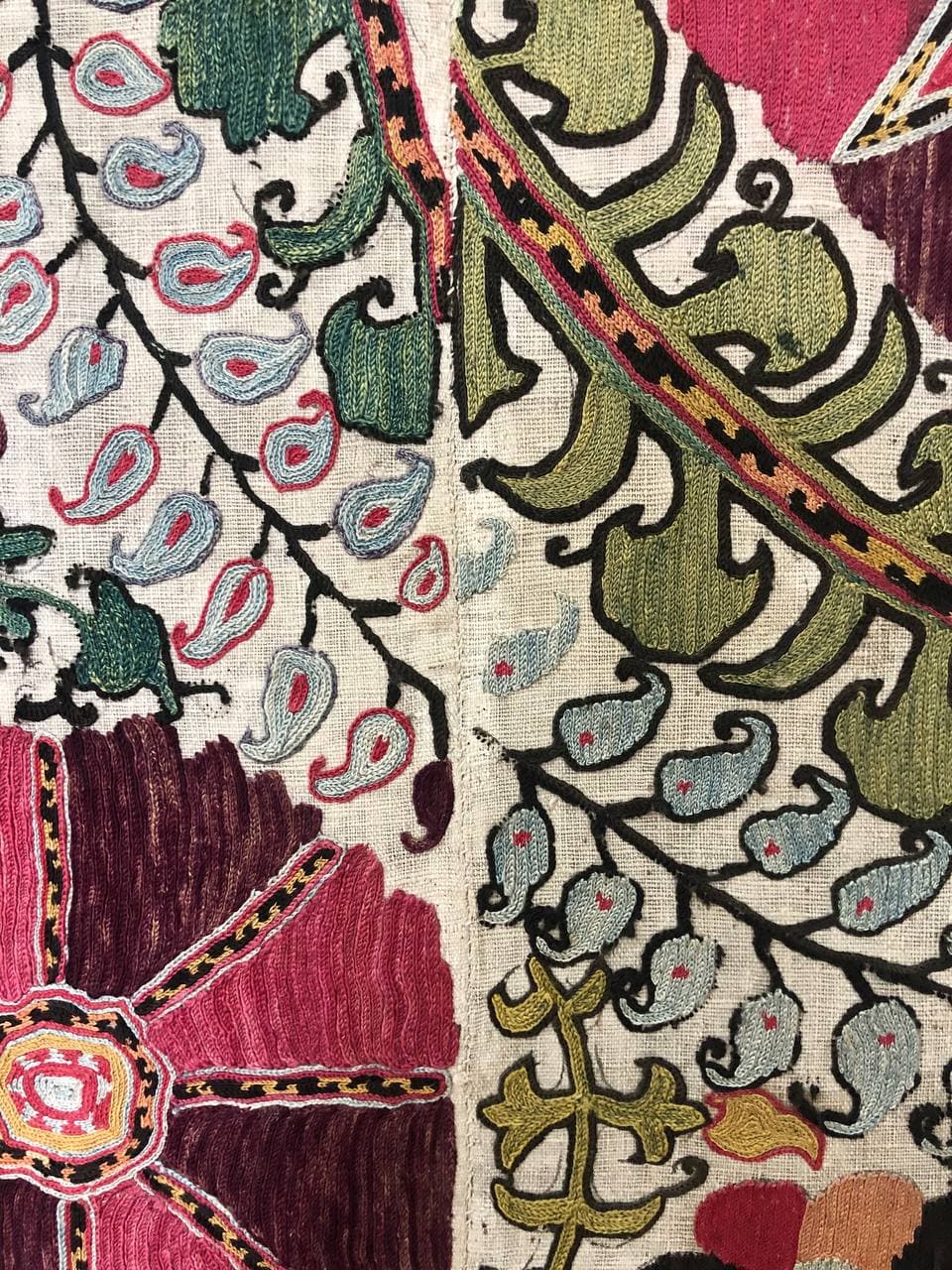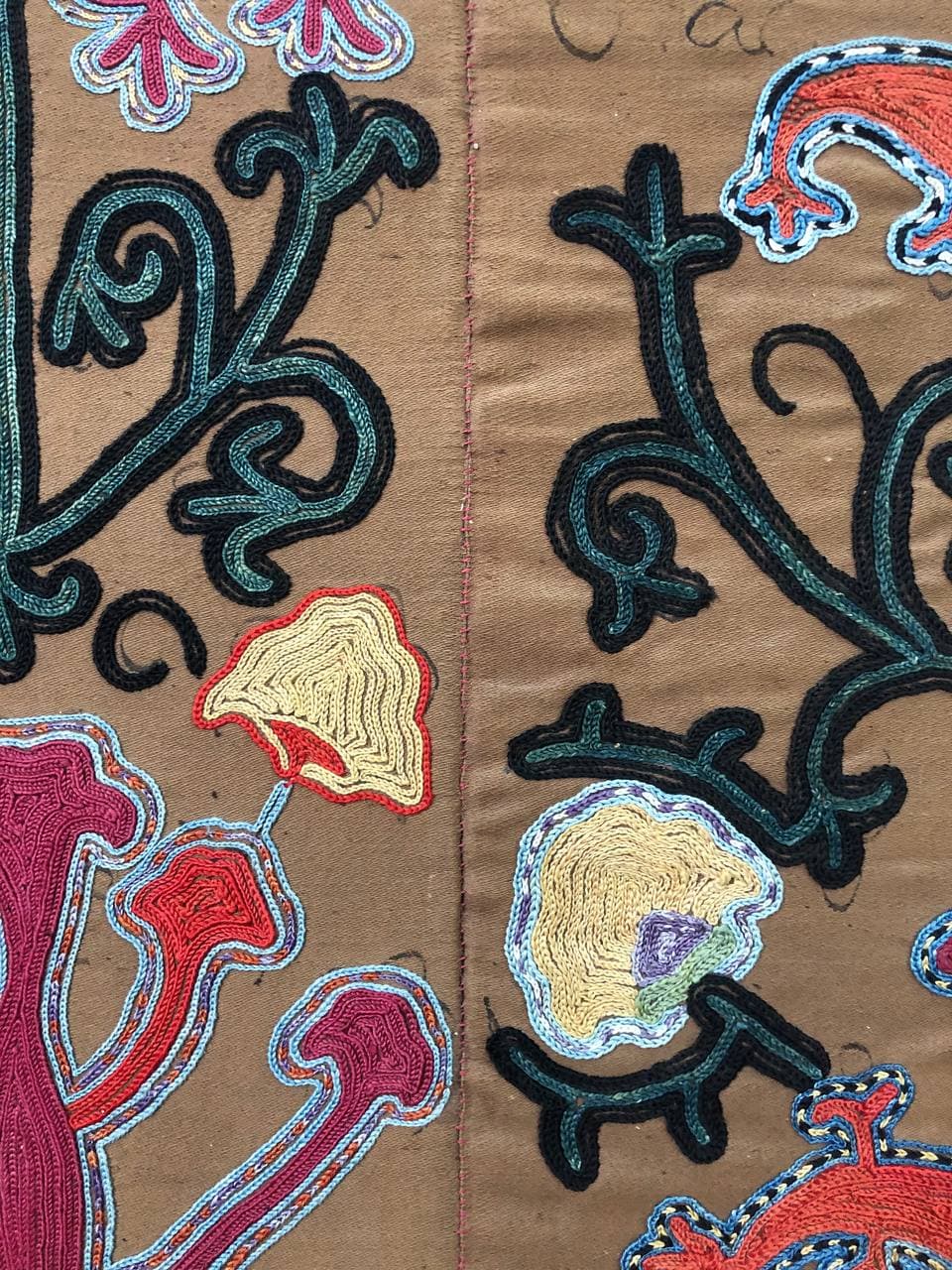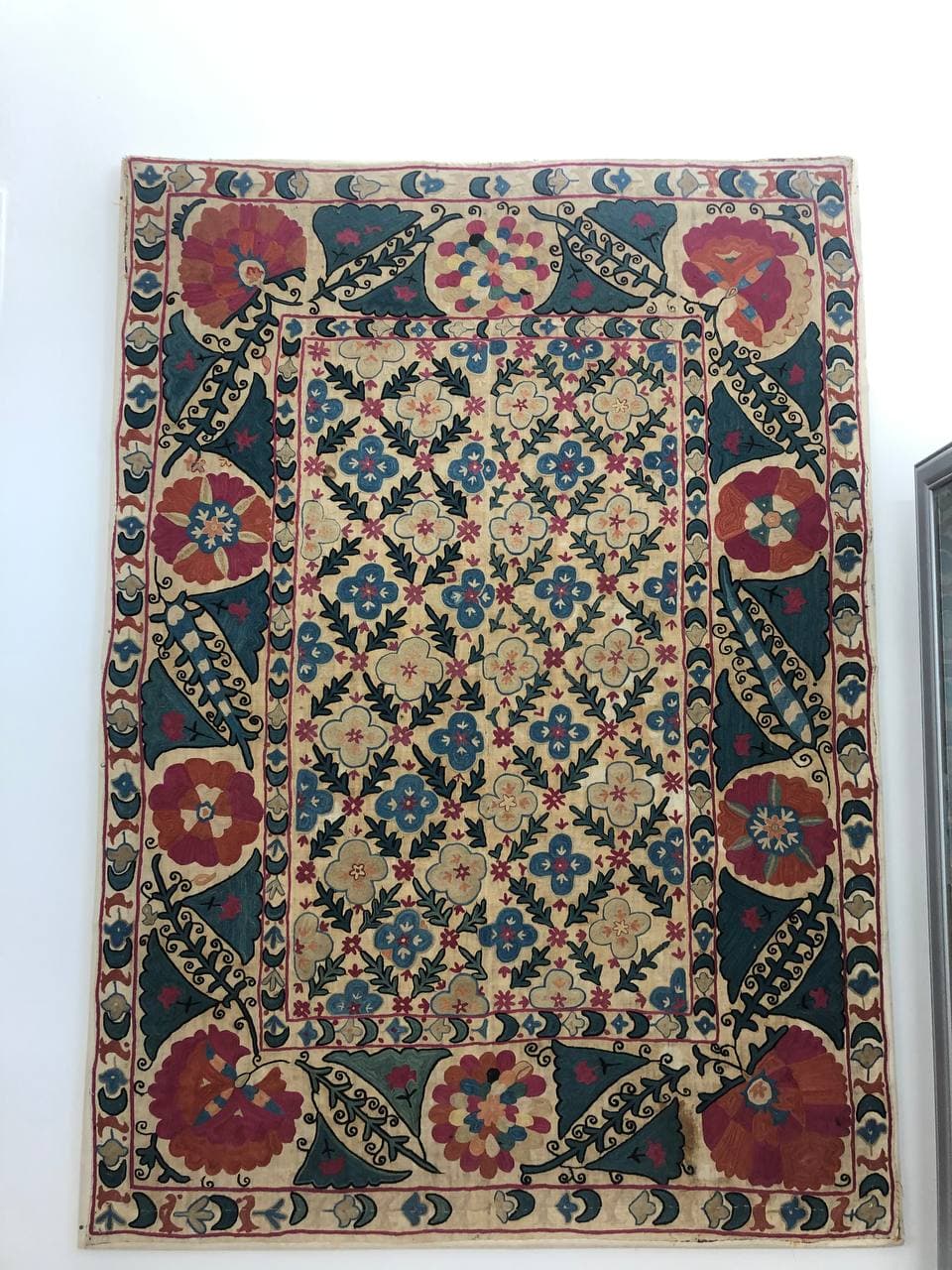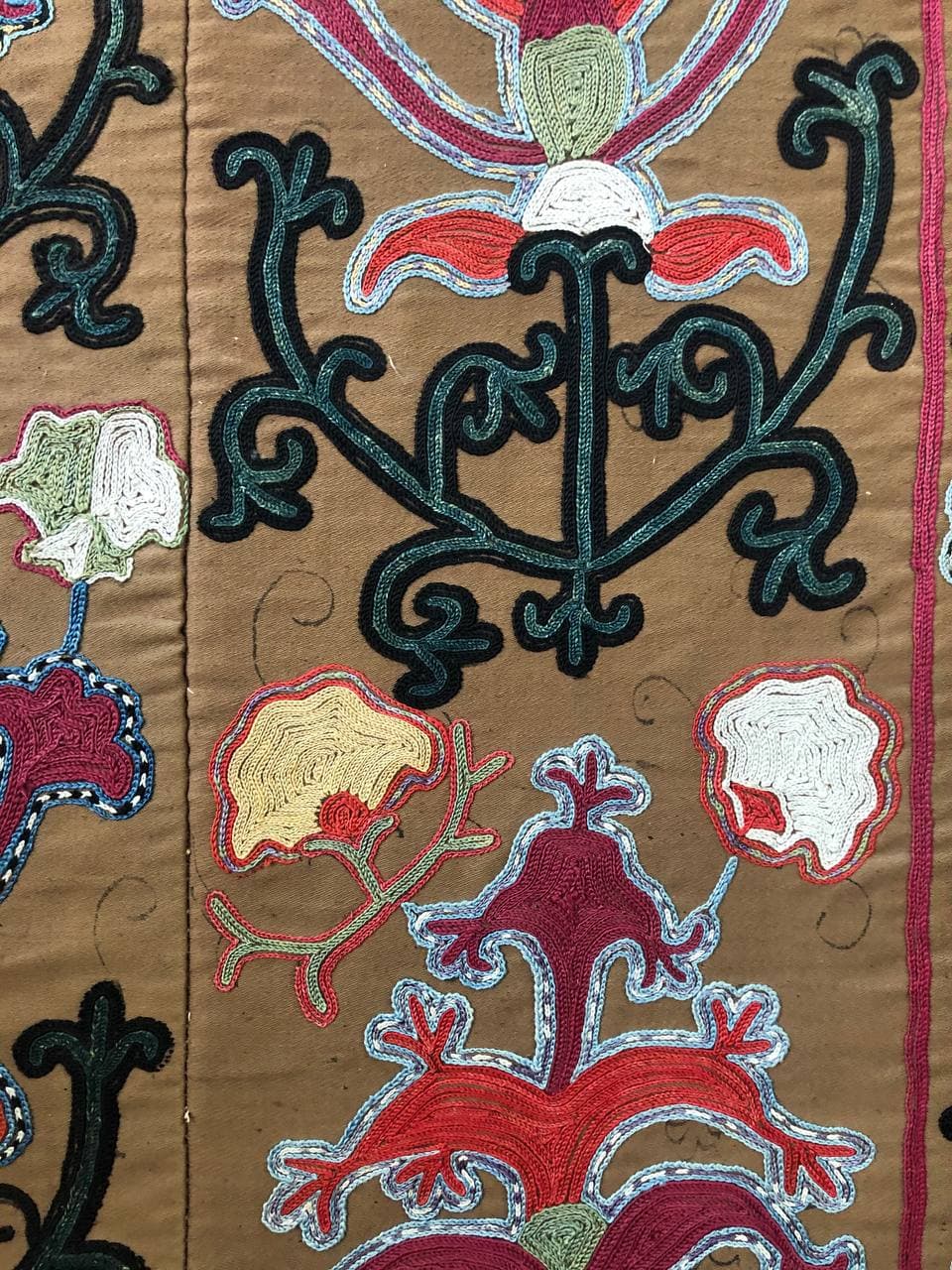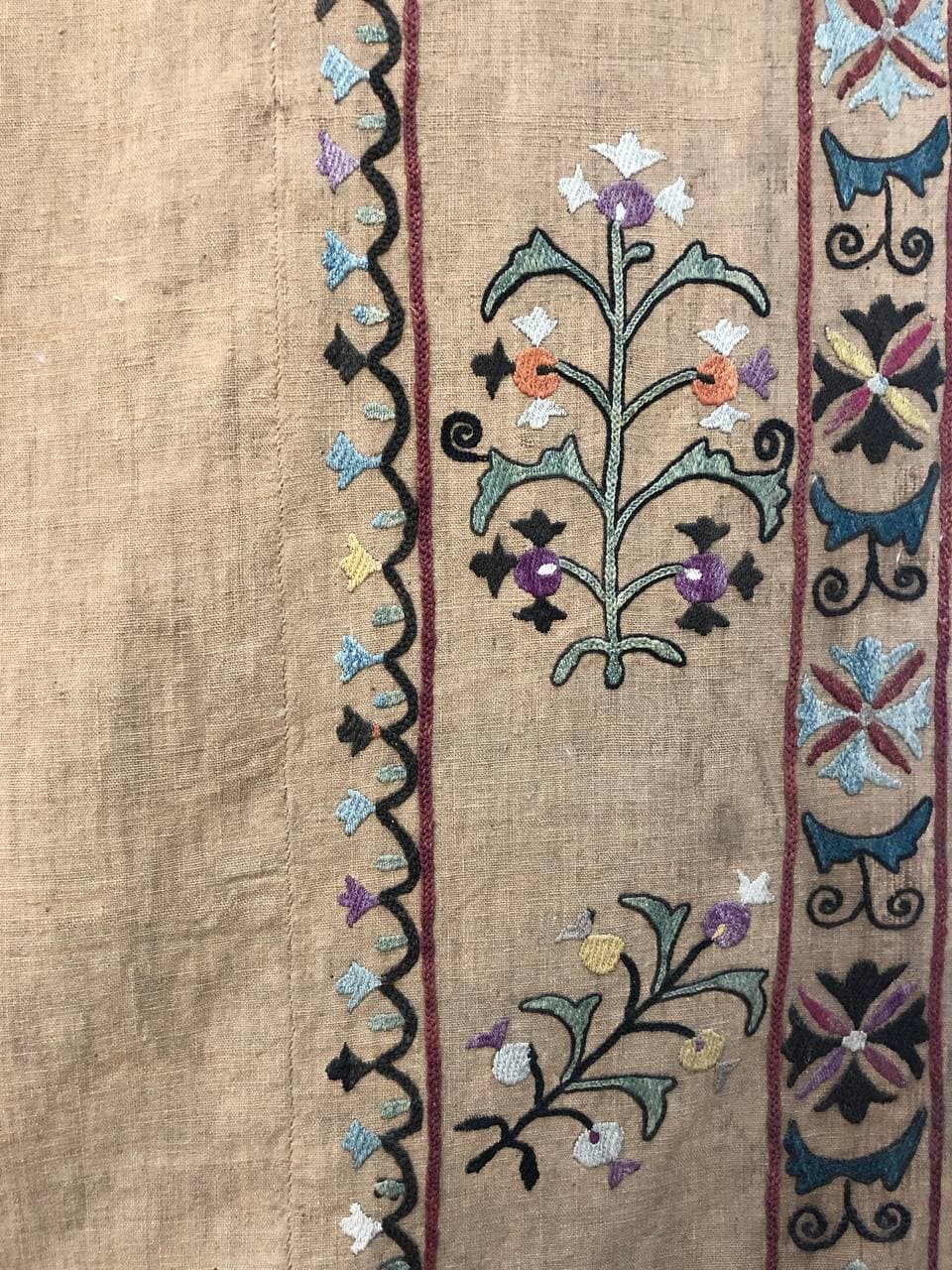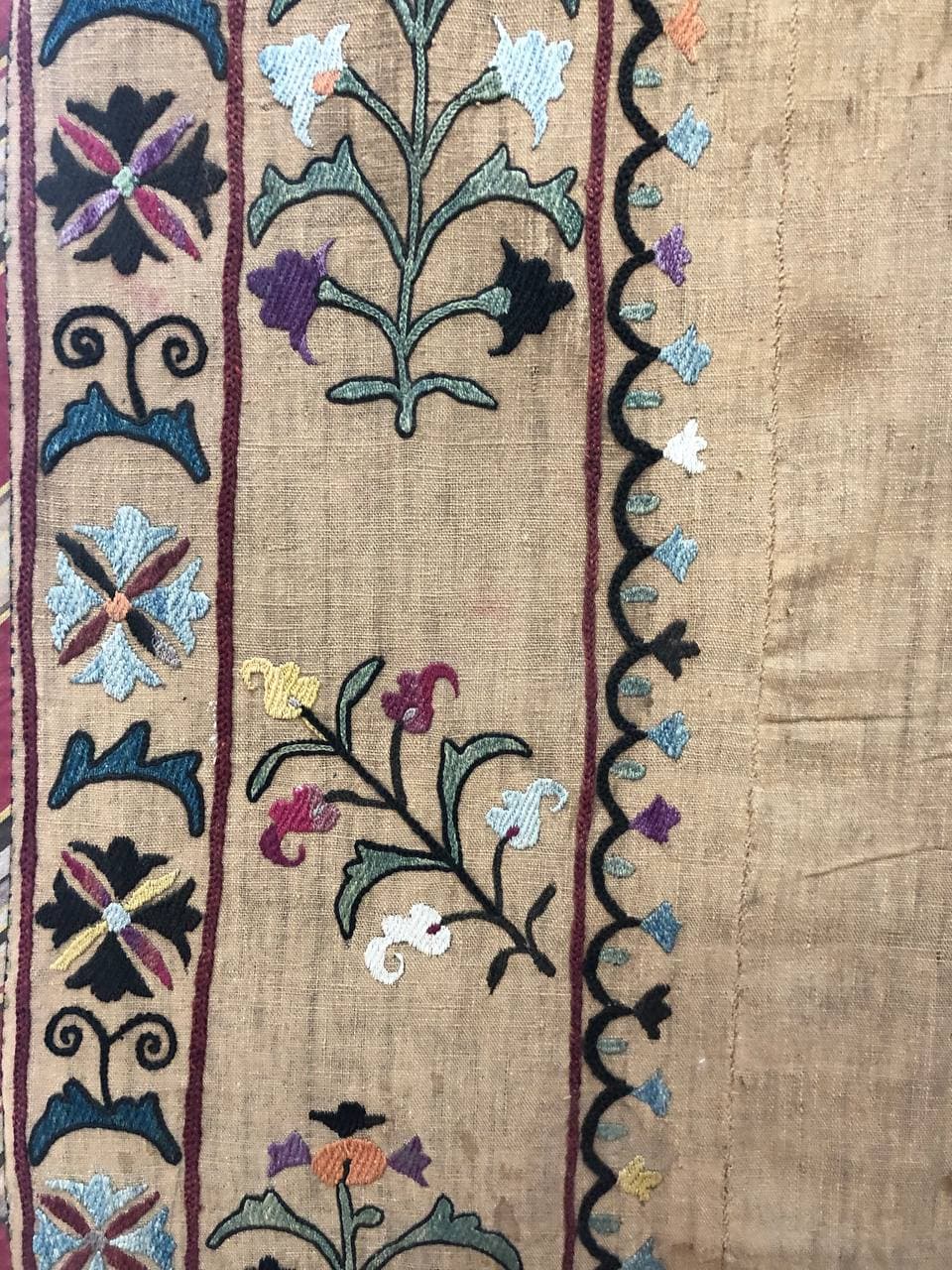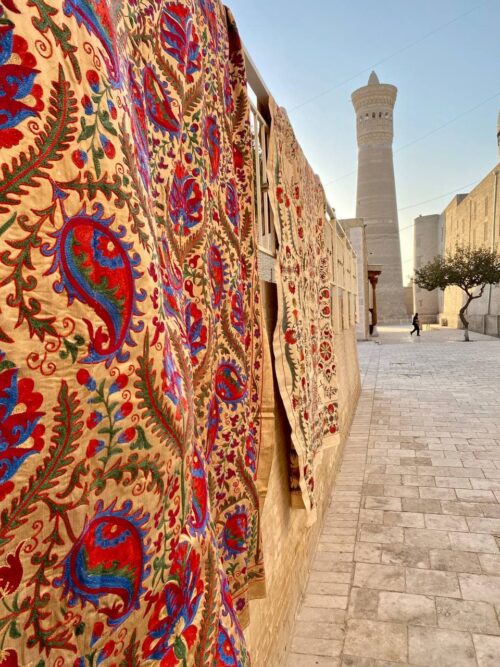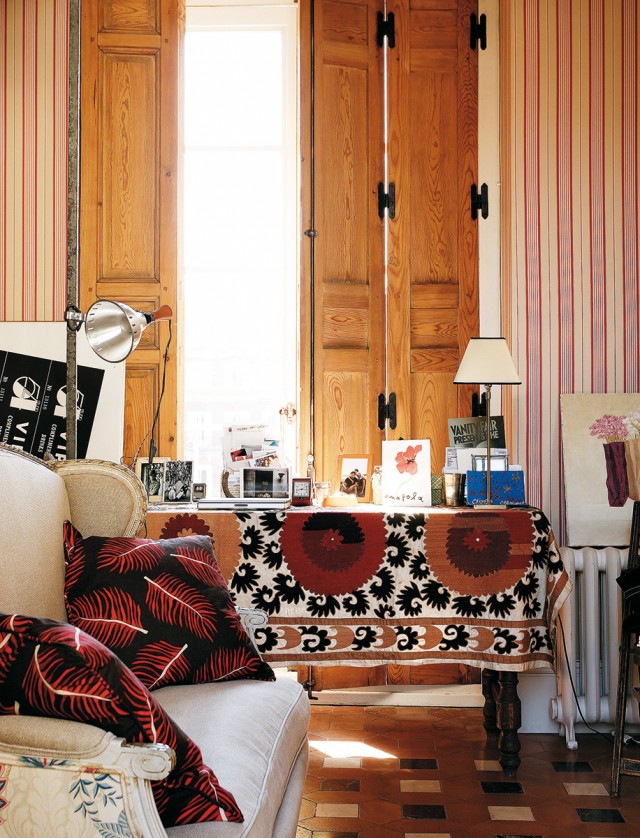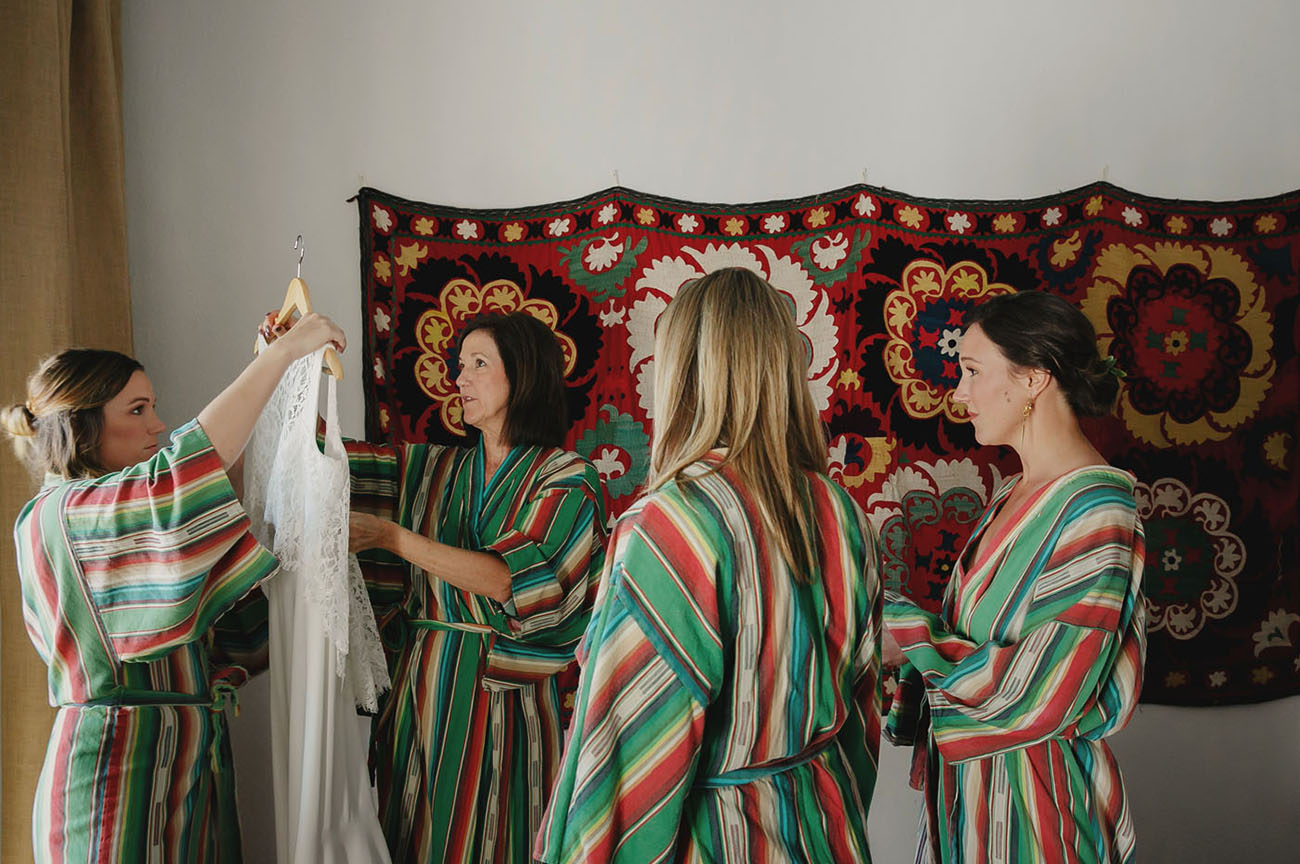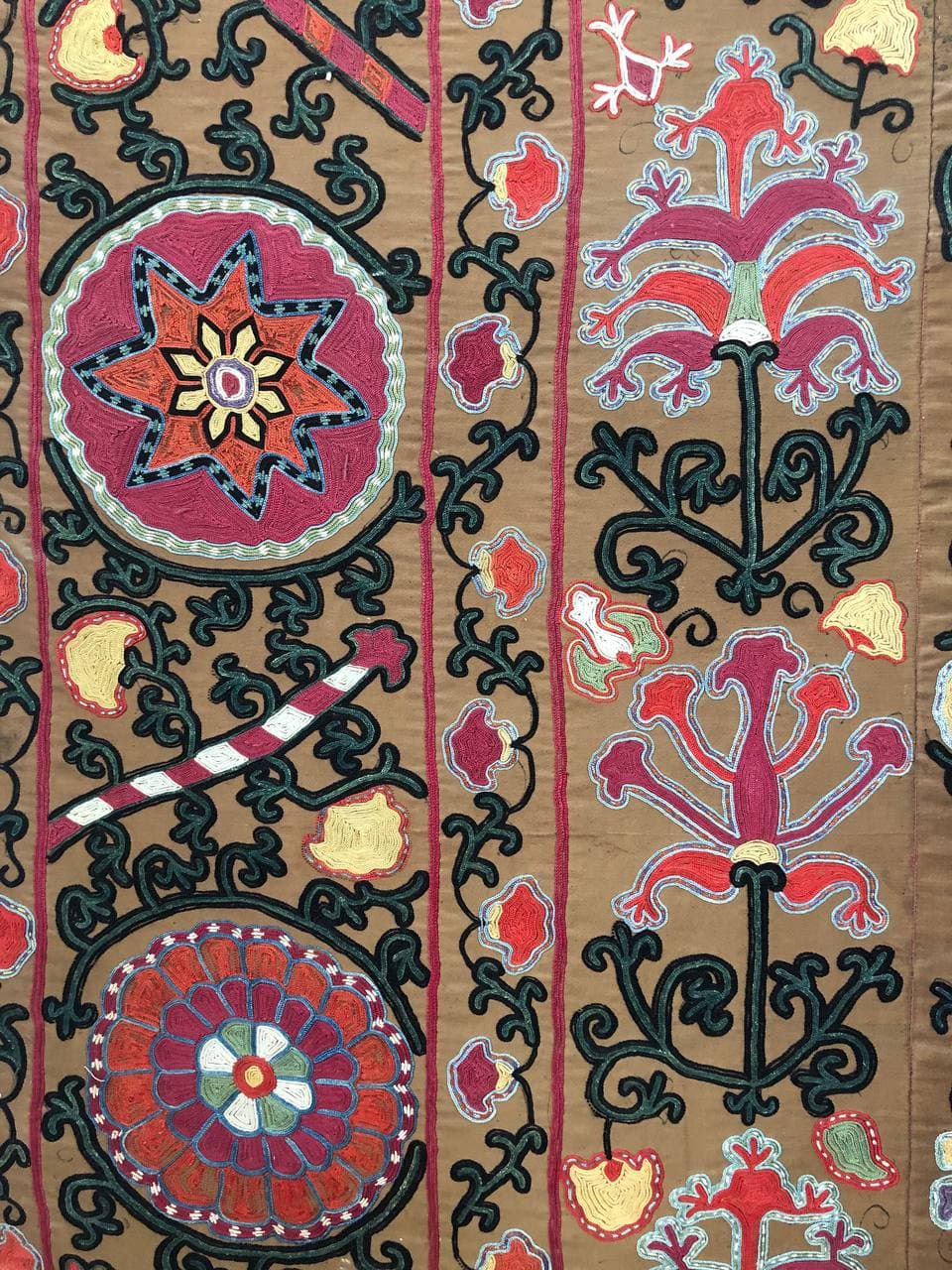
this post is about suzani, not so much about harem but I would like to start with some historic information to give you a context.
Summer residence of Emir of Bukhara: Sitorai Mohi-Hosa
The last Emir of Bukhara had his summer residence in the outskirts of Bukhara. The palace was built in the early 20th century. The style of the palace is a representation of the Emir himself – the man who stood between Eastern and Western traditions and curiously absorbed both. Russian influenced architecture of the palace was mixed with French furniture, Polish chandeliers, Chinese porcelain and Dutch heaters covered with German tiles. Colorful glass and plaster wall decorations In geometrical patterns indicate that the place belonged to a Muslim sovereign.
At the palace there was a small power generating plant – the first in the Emirate of Bukhara. The plant generated just enough electricity for a gigantic Polish chandelier in a reception hall.
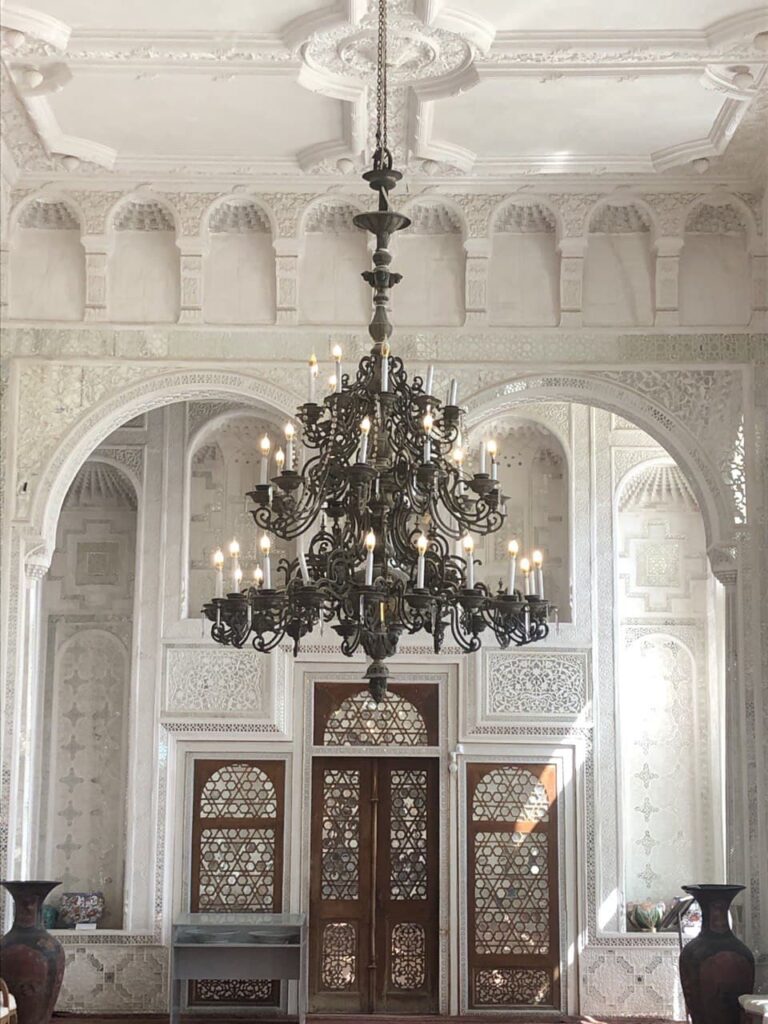
Harem and suzani
As any self respecting sovereign of the Islamic world the emir had a harem filled with legal wives (Islam religion allows 4) and concubines. With the arrival of bolsheviks and the Soviet army in 1930 the Emir had to flee from Bukhara. To these days there are legends surrounding his wealth and his hidden treasures.
During the Soviet years the harem with its lush gardens and beautiful peacocks was a sanatorium. These days the building is a museum of Bukharian suzani embroidery. Suzani embroidery is the only reason why we are writing this post – to share images of the exhibition.
Below are some examples of embroidery from the exhibition. All these suzani are examples of hand embroidery native to Bukhara. Some are old, some are not so old, all are stunning! You can find some suzani wall hangings at this link. We also have some gorgeous suzani pillow covers which you can find here.
